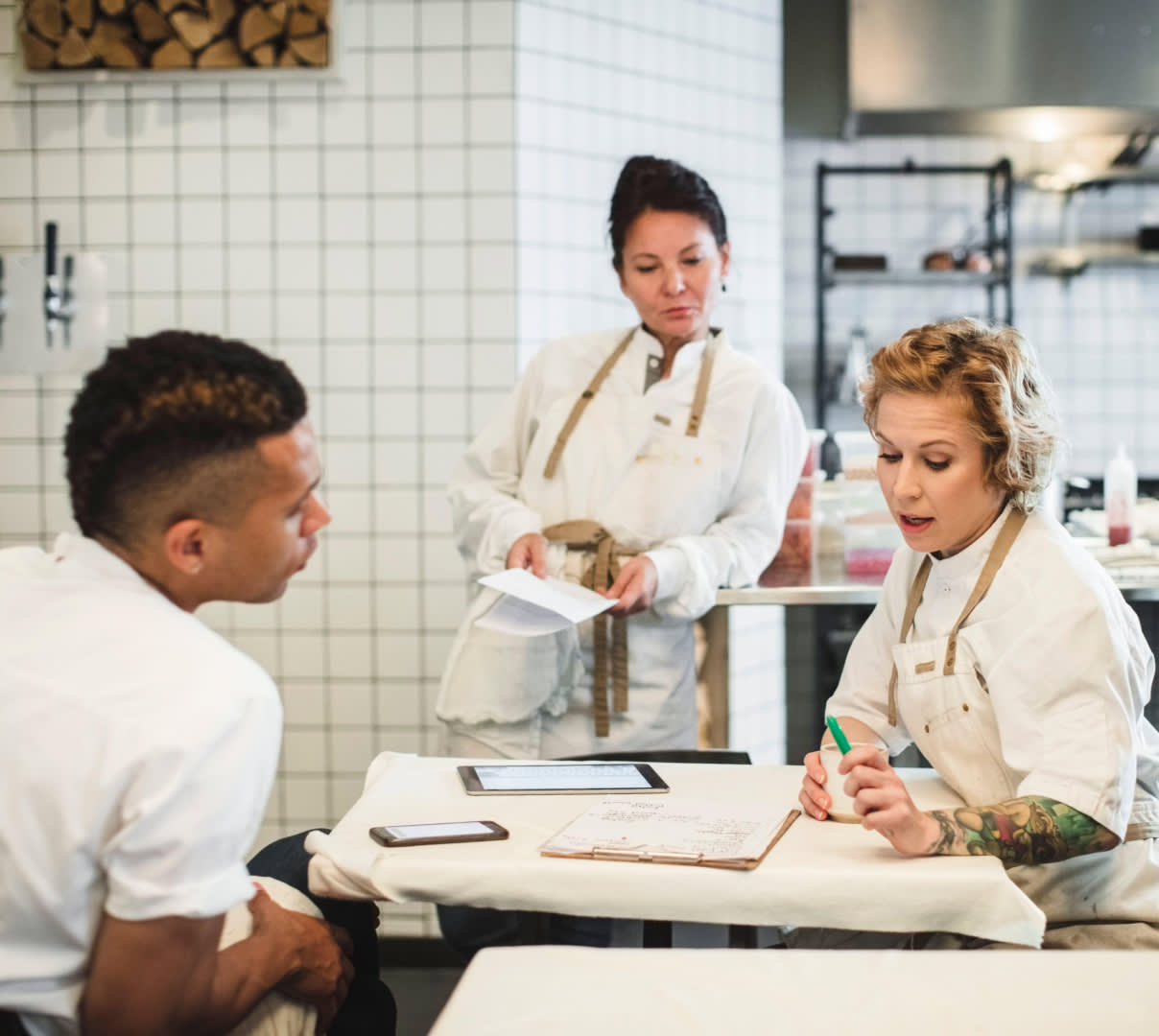As food and labor costs continue to rise, operators are even more thoughtful about where they invest their marketing and advertising dollars. But for restaurants of all sizes, sustained growth depends on reaching new diners. In this article, we’ll break down restaurant customer acquisition costs across different channels and ways to keep those expenses in check.
What is restaurant customer acquisition cost?
A restaurant’s customer acquisition cost (CAC) is the amount you spend to bring in new customers. This is your barometer for understanding the effectiveness of a particular marketing channel, and the success of specific campaigns.
Restaurant customer acquisition costs aren’t always a fixed number. For example, the CAC for a new location of an existing pizza chain will look very different from the CAC for a brand new, single location coffee shop.
CAC is a distinct metric from customer lifetime value (or LTV, which represents the net profit a restaurant customer will generate over the course of their dining relationship), but it’s important to have a handle on both. Across industries, it’s a common standard to strive for a 3:1 ratio of LTV to CAC. In other words, the profit a customer generates over time with your restaurant should be around three times greater than what you spent to acquire them.
When you understand your business’s average customer LTV, you can be more strategic about which restaurant marketing tactics to double down on.
How to calculate restaurant customer acquisition cost
The formula for calculating your restaurant customer acquisition cost is simple: Divide your total sales and marketing expenses (including the cost of discounts or other incentives) by the number of new customers you bring in during a specific timeframe. For instance, if you spend $1,000 on promotions in a month and you bring in 100 first-time customers, your CAC is $10.
Average restaurant customer acquisition cost by channel
Restaurant owners and operators should always keep a close eye on their total CAC, but that’s only step one. Chances are, your restaurant relies on a mix of advertising channels (e.g., sponsored social media posts, commercials, direct mail) as well as promotional discounts (e.g., 10% off a certain number of orders that meet a specific dollar amount). By calculating the CAC for each channel, you can get a more detailed sense of where you’re getting the most bang for your buck — and where you’re not.
As a general comparison, the average CAC for food and beverage ecommerce businesses is between $30 and $80. For retail businesses, an average CAC is closer to $10. And entertainment businesses spend an average of $82 on organic channels and $106 on paid channels to acquire a new customer.
Four popular restaurant paid marketing strategies and how their CAC stacks up
Whether you’re running an independent cafe or a multinational franchise, it pays to show up where consumers are already looking for you — online.
Organic marketing strategies such as posting from your own social media profiles are a great way to build your restaurant’s reputation and develop closer relationships with existing customers. But to reach consumers who aren’t familiar with your business (let alone your menu options), paid tactics are an essential ingredient.
Let’s look at how restaurant customer acquisition costs vary across common paid marketing options. Note that every platform measures success differently. Rather than paying or bidding based on CAC, many rely on alternative metrics such as cost per action (how much you spend when a user does something specific, like clicking through to your ordering page) and cost per lead.
Facebook ads for restaurants
In the US, 98% of consumers report reading online reviews for local businesses, and 46% say they use Facebook to evaluate new local spots. Beyond business profiles where you can post (for free) about location openings, new menu items and other restaurant news, Facebook offers a variety of advertising options to help you tap into new audiences. These run the gamut, from video ads to “boosted” posts (content you’ve already published organically that you put money behind to get in front of folks who might not follow your account).
Facebook’s ad targeting capabilities make it a cost efficient marketing channel for restaurants. You can tailor campaigns based on a particular age group and city, even down to their cuisine and restaurant segment preferences.
As of 2022, food and beverage industry businesses saw a $12.91 average cost per action from Facebook Ads.

Here's an example of a restaurant Facebook ad — Potbelly Sandwich Works features their new Cookie Butter shake.
Instagram ads for restaurants
Similar to Facebook, Instagram offers a stacked menu of targeted advertising capabilities. Boosting your organic posts is also an option on Instagram, but there are other ad formats unique to the platform.
Restaurants can create Instagram Story ads (clips up to 15 seconds long that can include static images, video, or simply text) and partner with relevant content creators on branded ads that get your restaurant’s name in front of new audiences. Food and beverage industry businesses see a $19.67 average cost-per-action for Instagram ads.

Chipotle's Sponsored Instagram ad features their new Chicken Al Pastor.
Google Ads for restaurants
More than 60% of diners use Google to search for restaurants.
When someone searches for “falafel near me,” they’re more likely looking to place an order compared to someone casually scrolling Instagram. Google Ads ensure your restaurant pops up when people are hungry and ready to pay. You can also target those who have shown interest in a particular place — for instance, if they’re planning a move or a trip — with sponsored search listings.)
The average Google Ad cost per lead for restaurants in 2022 was $26.58.

Here's a Google result showing a Sponsored Listing for Naf Naf Middle Eastern Grill.
Restaurant promotions on DoorDash
In DoorDash’s 2022 Economic Impact Report, 90% of merchant respondents said they would recommend DoorDash as a way to access a wider range of customers, and 83% of merchants agree that DoorDash has helped them get in front of customers they otherwise wouldn’t be able to reach. More than three quarters of merchants reported that they’re satisfied with DoorDash’s performance in attracting new customers.
With DoorDash, restaurants can use Promotions to target new and/or existing customers with enticing discounts.

Here's an example of the online ordering menu for Pardon My Cheesesteak on DoorDash with a featured Promotion.
DoorDash Partnership Plans provide a variety of features to reach new customers and engage with your audience, like access to the DashPass audience for Plus and Premier partners.
Comparing restaurant industry paid customer and order acquisition costs
Your average cost per acquisition (or order) is calculated by taking sales and marketing spend for a given day, week, month, or quarter, and dividing it by the number of new customers or orders generated during that time.
Here’s what a typical cost per acquisition would look across different channels for restaurants:
DoorDash Marketplace Orders: Average Cost Per Order = $7.50
Average cost per order for Plus plans for a restaurant with an average order size of $30 and 5 ordersGoogle Ads: Average CAC = $26.58
Average cost per lead (CPL) for Google Ads for food and beverage businessesFacebook Ads: Average CAC = $12.91
Average cost per action (CPA) for Facebook Ads for the food and drink industryInstagram Ads: Average CAC = $19.67
Average cost per action (CPA) for Instagram Ads for food and drink businesses
How to lower your restaurant customer and order acquisition cost
Once you understand your current customer and order acquisition costs, you can take steps to minimize them. Lowering your acquisition costs ultimately frees up marketing budget to reinvest in channels that perform best (or other revenue-generating projects). Consider these ways to bring your costs down:
Take a data-driven approach & test various channels over time
The tactics that work one quarter may underperform the next (especially on social media where algorithms and audience preferences change fast). Run campaigns on different channels for defined periods of time to gather data and make tweaks as you go.
Conduct audience research upfront to understand where your potential customers already are. For instance, is the demographic you’re trying to reach more likely to use Instagram or Facebook? Explore recent consumer trends reports for your region to find out where your audience goes to find new restaurants.
A/B test your social ad copy
Social copywriting is an art and a science. For both organic and paid posts, run different experiments to find the style that resonates with your audience. Isolate different variables to find the ideal caption length and elements (e.g., questions v. statements, emojis, hashtags) that generate the highest click rates.
Mix paid and organic social marketing strategies
Organic social marketing inherently comes with a much lower CAC, but organic posting alone won’t get your business in front of new customers. A hybrid approach is the best way to extend your reach while keeping your budget in check.
Think of it this way: Paid posts offer the targeting necessary to attract new audiences, while organic posts give you a platform for engagement and customer service to keep diners coming back.
Use DoorDash to reach new customers — and turn them into regulars
One of the most direct ways to diversify your marketing mix and lower your CAC is by getting in front of folks who are ready to order. Promotions let you offer incentives like special discounts, free items or $0 delivery fees, and showcase your restaurant in the Offers tab on DoorDash.
When Montreal-based Sumac needed to pivot and offer delivery to sustain their business, they turned to DoorDash for delivery and to boost sales. “DoorDash provides sales and cash flow that keep things consistent and give us a tremendous amount of cushion during tougher periods,” shared David Bloom, Partner at Sumac. After optimizing for off-premise food quality and consumer needs, they opened up several new sales channels for their food and products with DoorDash. The results? A 454% boost in DoorDash orders and nearly 500% increase in sales. And, monthly ticket size on DoorDash grew by 7%.
Read the full story of Sumac’s growth.

Delivery services get a bad rap because of the commission, but DoorDash is bringing us new clients. That's how I look at the commission — we're paying for advertising and customer acquisition.
Extend your restaurant’s reach with DoorDash
Containing restaurant customer acquisition costs keeps business expenses down and helps you focus on the marketing channels that provide the best return on investment. Learn more about how DoorDash helps merchants maximize their marketing spend and increase their visibility.





